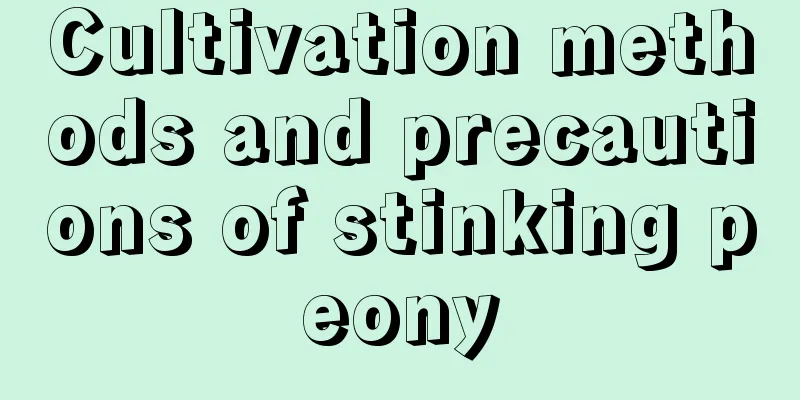These 3 kinds of flowers love vinegar the most. Add a pound of vinegar each time and their leaves will be green and shiny!

|
Because there are more and more types of flowers on the market, and the maintenance methods of many plants are very different, we can grasp their preferences and prescribe the right medicine. In this way, we can keep the flower plants vigorous and shiny without almost any effort. For example, Huahua knows that these "3 types" of flowers love "vinegar" the most. Feed them one pound of food a month, and their leaves will be green and shiny! What are the benefits of using vinegar to grow flowers?Vinegar is a common condiment in our lives. We all know that it is acidic, so it is very suitable for many plants and flowers that like an acidic growing environment. Vinegar is made from grains. After fermentation, the nutrients are completely released and are more easily absorbed by flower plants. How to use vinegar to grow flowers:We cannot use vinegar directly to water flowers. We need to add water and dilute it after fermentation before we can use it. Generally, we pour vinegar into a container first, then add water and place it in a cool place to ferment for about half a month. After fermentation is completed, be sure to dilute it in a ratio of 1:50 when using it to ensure that the flower roots are not burned and growth is promoted. 1. SchlumbergeraChristmas cactus is a very common household flower. Its flowering time is concentrated in winter and spring, which can satisfy many people's desire to enjoy flowers in winter. Christmas cactus has a large number of flowers, and the bright small flower buds hang on the serrated leaves, which has a very high ornamental value. During daily care, Christmas cactus needs to be given scattered light to supplement nutrients, which can ensure its growth and the glossiness of the flower buds; in addition, Christmas cactus needs water control before flowering, try to water it less or not at all, which can help the flower buds emerge quickly! (ii) CliviaClivia is a flower that many flower lovers love and hate. Its flowers are bright and its leaves are green and upright, but it takes a lot of effort to maintain Clivia like this. After all, Clivia is recognized as one of the most difficult flowers to grow in the flower industry. Clivia needs daily supplementation of light and nutrients. Now in winter, you can place it near the balcony, but you must remember to move the pot regularly to ensure even growth. It is very important to water Clivia because it has fleshy roots. Water it thoroughly, otherwise it will easily cause root rot and waterlogging. (3) BougainvilleaBougainvillea is a plant that can grow vigorously both indoors and outdoors. It has tight flowering buds and comes in many colors, making it very suitable for maintenance as an ornamental plant. If you place a few pots at home, it will grow into a sea of flowers in no time. Bougainvillea needs to be placed in a sunny place to grow, so as to ensure the number and glossiness of its flowers. Bougainvillea should be watered less starting from September to promote the germination of flower buds. Normal watering can be resumed after the flower buds emerge. The above three kinds of flowers love vinegar the most. If you have them at home, you might as well try using vinegar to care for them. I wonder if you have any better tips for growing flowers? Let’s share it together! |
<<: How to Graft Christmas Cacti
Recommend
Does pepper have a taproot system or a fibrous root system (how to promote the growth of pepper root system)
A netizen asked: What are the characteristics of ...
How to fertilize pink roses
Does this plant need fertilizer? It often needs n...
Huang Xueguang's breeding methods and precautions
1. Potting soil During the breeding period, you n...
What to do if the red lotus grows too long
The reason why red lotus grows too long environme...
Can chives be sown in October?
Leek is one of the foods that have been identifie...
When is the best time to sow Gloxinia
Gloxinia sowing time Gloxinia is a plant of the G...
Don't spend money to buy roses, just pick a branch on the roadside and you can have a rose garden
1. The best time for rose cuttings Rose cuttings ...
How to water Strelitzia
Key points for watering Strelitzia reginae Streli...
Diseases and Pests of Winter Corals and Their Control
Diseases of winter coral and their prevention and...
When does peony bloom? Can peony bloom all year round?
1. When is the flowering season? Peonies usually ...
What fertilizer is good for growing pumpkins?
Pumpkin Fertilizer About 10 days after the pumpki...
Can calamus be hydroponically cultivated? Hydroponics methods and precautions
Can calamus be grown hydroponically? Acorus can b...
What month is suitable for planting honeysuckle?
When to plant honeysuckle Honeysuckle is generall...
Can the green radish survive if its leaves wilt?
1. Can you still survive if you wilt? The plant P...
How to prune a one-year-old tree?
Young fruit trees grow too fast and are prone to ...









